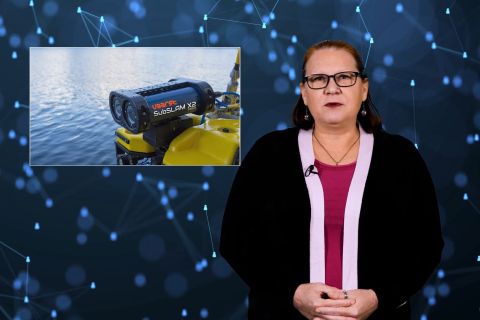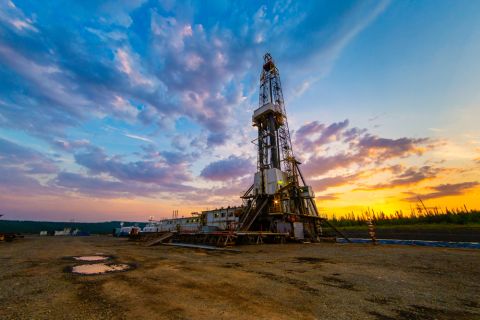Remember when rig count was the main barometer for oil and gas activity? It now appears well stimulation activity is adding a new wrinkle to industry metrics. While it is not hard to find stimulation fleet counts, it is difficult to find two that agree. Consequently, earnings commentary from publicly held stimulation firms has become an activity proxy.
And that is why earnings commentary from these firms about slowing completion activity is of interest. This marks the first time in two years that completion activity has slowed. So far, well stimulation is the only oilfield sector domestically to evidence a decrease in demand. That begs the question of whether softening demand for stimulation services is the canary in the oil and gas activity coal mine, or a reflection of prosaic reasons like seasonality.
First, it is evident that stimulation fleets are stacking out on reduced demand. Idled fleets may be approaching 10% of industry capacity. Secondly, pricing for stimulation services is dropping, especially on the spot market, and is now down more than 20% from peak. While dedicated fleet pricing has stayed flat, management at several stimulation firms expressed concern that this, too, would decline rolling into 2019. Thirdly, gross fleet revenues are down, though this may reflect a shift to cheaper in-basin sand, or to a greater percentage of customers who are procuring their own sand.
The macro for well stimulation implies a choppy outlook for at least a couple quarters. Deployment of previously ordered newbuild fleets has been pushed deeper into 2019 and some orders for newbuild equipment for new fleets have been postponed.
Finally, white space has become the latest buzz term in industry jargon and is appearing more frequently on the calendar for stimulation fleets. That, in turn, is exasperating the overall pricing picture in a negative feedback loop as stimulation companies bid work at lower pricing levels to keep crews busy.
All this is occurring as the industry rounds the corner toward year-end and seasonal holidays that annually produce declining demand for stimulation crews.
As an aside, the long-prophesized curtailment in Permian Basin activity due to capacity constraints for midstream takeaway capacity has been a part of the conversation for most of the year. Yet, slowdowns due to Permian takeaway capacity appear to be anecdotal so far.
Instead, other factors are pertinent. The industry move to pad drilling, which is approaching two-thirds of horizontal wells nationally and exceeding 90% in several regional markets, provides stimulation fleets more time on the well site with the ability to increase completion stage counts. Stage count productivity in such circumstances is up in the high single digits vs. previous completions. In other words, the stimulation sector has gotten better and that has shown up in margins for well stimulation providers with annualized operating income ranging from $15 million to $22 million, according to the publicly-held stimulation companies. But, it now appears operating income, and stimulation fleet effectiveness (as enumerated by stage count per fleet), peaked midyear.
Furthermore, productivity improvements have become a two-sided sword since the industry is generating hydrocarbons at a greater rate and creating a temporary supply/demand imbalance in demand for stimulation fleets and crews.
Secondly, those efficiency gains enabled public E&Ps to meet 2018 production targets earlier than anticipated. Couple this with budget exhaustion, despite E&P capex increases earlier in 2018, which suggests this year’s field programs have come to an end.
What is the duration of the downturn? There are unknowns. Winter weather, which hurt the market in the first quarter 2018, is always a wild card. So, too, are global geopolitics with renewed sanctions on Iran, repercussions from the murder of a Washington Post columnist inside a Saudi embassy, and Russia.
As for weather, take your pick. Either it is a 70% chance for an El Nino winter with warmer temps offset by more rainfall, according to the national weather service, or a colder, snowier winter, according to the Farmers Almanac.
Finally, don’t discount oil prices, which have dropped back again into the five-handle range and are down 20% from peak.
For now, let’s go with the earnings commentary from management at well stimulation firms. Namely, the current slowdown is temporary. Activity recovers in mid-first-quarter 2019 and develops momentum into the second half of 2019.
Recommended Reading
TGS, SLB to Conduct Engagement Phase 5 in GoM
2024-02-05 - TGS and SLB’s seventh program within the joint venture involves the acquisition of 157 Outer Continental Shelf blocks.
2023-2025 Subsea Tieback Round-Up
2024-02-06 - Here's a look at subsea tieback projects across the globe. The first in a two-part series, this report highlights some of the subsea tiebacks scheduled to be online by 2025.
StimStixx, Hunting Titan Partner on Well Perforation, Acidizing
2024-02-07 - The strategic partnership between StimStixx Technologies and Hunting Titan will increase well treatments and reduce costs, the companies said.
Tech Trends: Autonomous Drone Aims to Disrupt Subsea Inspection
2024-01-30 - The partners in the project are working to usher in a new era of inspection efficiencies.
Drilling Tech Rides a Wave
2024-01-30 - Can new designs, automation and aerospace inspiration boost drilling results?





